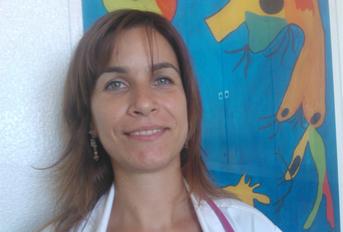Associação Portuguesa de Investigação em Cancro
Nevoid basal cell carcinoma syndrome associated to congenital orbital teratoma
Nevoid basal cell carcinoma syndrome associated to congenital orbital teratoma

Authors and Affiliations:
Ana Luísa Rodrigues, Ana Carvalho e Carlos Pereira Duarte, Serviço de Pediatria, Hospital do Divino Espírito Santo de Ponta Delgada, EPE, Açores;
Patrícia Santos, Serviço de Pediatria, Hospital do Divino Espírito Santo de Ponta Delgada, EPE, Açores;
Vítor Carneiro, Serviço de Anatomia Patológica, Hospital do Divino Espírito Santo de Ponta Delgada, EPE, Açores;
Patrícia Gilardi e Jorge Puente-Prieto, LabGenetics, Laboratorio de Genetica Clinica S.L. San Sebastián de los Reyes, Madrid, Spain;
Rita Cabral e Luísa Mota-Vieira, Unidade de Genética e Patologia Moleculares, Hospital do Divino Espírito Santo de Ponta Delgada, EPE, Açores.
Abstract:
Gorlin-Goltz syndrome, or nevoid basal cell carcinoma syndrome (NBCCS), is a rare autosomal dominant disorder caused by mutations in the PTCH1 gene and shows a high level of penetrance and variable expressivity. The syndrome is characterized by developmental abnormalities or neoplasms and is diagnosed with 2 major criteria, or with 1 major and 2 minor criteria. Here, we report a new clinical manifestation associated with this syndrome in a boy affected by NBCCS who had congenital orbital teratoma at birth. Later, at the age of 15 years, he presented with 4 major and 4 minor criteria of NBCCS, including multiple basal cell carcinoma and 2 odontogenic keratocysts of the jaw, both confirmed by histology, more than 5 palmar pits, calcification of the cerebral falx, extensive meningeal calcifications, macrocephaly, hypertelorism, frontal bosses, and kyphoscoliosis. PTCH1 mutation analysis revealed the heterozygous germline mutation c.290dupA. This mutation generated a frameshift within exon 2 and an early premature stop codon (p.Asn97LysfsX43), predicting a truncated protein with complete loss of function. Identification of this mutation is useful for genetic counseling. Although the clinical symptoms are well-known, our case contributes to the understanding of phenotypic variability inNBCCS, highlighting that PTCH1 mutations cannot be used for predicting disease burden and reinforces the need of a multidisciplinary team in the diagnosis, treatment, and follow-up of NBCCS patients.
Journal: Genet Mol Res, 13:5654-63 (2014)






